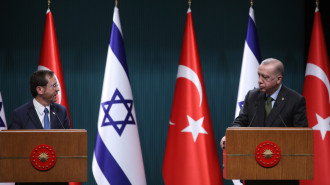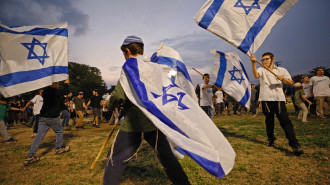

The Russian-Iranian drone war began in the skies of northwestern Syria nearly three years ago. At that time, the region, controlled by opposition factions, had never witnessed this type of threat before, with the unmanned drones targeting leaders of Hayat Tahrir al-Sham (HTS) and other anti-regime factions.
More recently, however, these deadly aerial weapons have switched from targeting tunnels and military installations to attacking civilians and farmers, preventing them from accessing their land and livelihoods close to the lines of contact.
The attacks are taking place in areas subject to a 2020 ceasefire agreement between Turkey and Russia which supposedly fixed the fronts with assurances they wouldn't be altered.
According to those following the Ukraine war, Moscow and its Syrian allies have been employing FPV Kamikaze drones (a type of single-use quadcopter) in Syria, which is a clear sign that the technology has been transferred from the Ukraine war to Syria.
Shooting down drones
Syrian regime forces have been deploying drones in southern Syria since 2020, hence entire military divisions are now experienced in using these weapons.
To combat this situation, with the remote-controlled killers flying almost daily in the skies above northwest Syria - preventing civilians from going about their normal lives - locals in the villages have found an effective way to combat them: hunting rifles.
Ali Al Kayyal who lives in Al-Nayrab village, southeast of Aleppo, told Al-Araby Al-Jadeed, The New Arab's Arabic-language sister edition, that he managed to shoot down a drone hovering above the village with his hunting rifle, destroying it.
He says his success prompted other hunters in the village to form teams who took alternating shifts to monitor the drones and shoot them down before they could strike more local targets.
The drones, which don't distinguish between civilian and military targets, have terrorised villagers, especially farmers, their cars, and tractors.
Kayyal pointed out that today certain areas of northwest Syria are under threat by both regular artillery and air strikes by Syrian regime forces, Russia, and Iran, as well as facing this new military tactic of suicide drones on the front lines.
|
|
Escalating attacks on civilians
The Syrian Civil Defence (also known as the White Helmets) have documented 392 attacks on northwest Syria by the regime, Russia, and affiliated militias using drones. These have led to the deaths of 38 civilians, including 13 children and six women, and have injured 150 others, among them 57 children and 16 women, during the first half of 2024.
Majed Al-Ahmad rescued his friend seconds before his house on the outskirts of Jabal Al-Zawiya was targeted by a drone hovering overhead. They had heard the hum of the drone and were preparing to shoot it down when it suddenly descended to attack them.
After firing and missing, Al-Ahmad managed to get his friend out of the house before the drone fired, destroying the property.
He explained that the unmanned aircraft are undermining the ability of the region’s residents to make a living by preventing them from accessing their farmland and tending to it.
The attacks have been spread throughout the region, but have been concentrated particularly between the rural areas in western Aleppo province, around the fertile Jabal Al-Zawiya countryside in Idlib, and the Al-Ghab plain in Hama province.
Farmer Ali Al-Qawadi, who lives in the village of Qastoun in Jabal Al-Zawiya, says agriculture is the main source of income for him and other residents in the area, but the continued drone attacks are leaving farmers reluctant to cultivate their lands close to the front lines, which in turn is further damaging their economic situation and food security across the entire northwest of Syria.
He says he has been targeted multiple times, which has left him with numerous injuries. This has stopped him from going to his land and left him unable to secure even his daily sustenance.
At the same time, the humanitarian response in the region has declined, and the international community isn't even attempting to enforce any measures to stop these attacks against innocent people, deepening their helplessness, he says.
|
|
Mohammed al-Ahmad is a commander in the Al-Fatah al-Mubin 'operations room' - co-formed by Syrian rebel and jihadist factions in 2019 to direct rebel military operations in Idlib and the countryside of Aleppo, Latakia, and Hama.
The coalition is made up of a number of factions including Ahrar al-Sham, Jaysh Al Izza, Jaysh Al Nasr, and HTS.
Al-Ahmad says the drones are operated via cameras and tend to fly at low heights of no higher than 35 metres due to their inability to withstand wind speeds at higher altitudes due to their light weight.
Most of the models used can fly for between nine and 15 minutes, depending on the weight of the payload, and can be operated from a distance of up to 10 km as long as there is no obstruction hindering communication between them.
The commander added that the drones are unable to carry out reconnaissance, while their low flying height makes them an easy target. Additionally, momentary disconnections between the operator and their drone, even for a few seconds, can lead them to crash.
Ukraine-honed tactics
The commander said that several different drone types are being used, including the winged 'kamikaze' suicide drone, which has been deployed extensively in the Russia-Ukraine war, and the new generation of FPV drones or 'birds of prey', which are both manufactured at a low cost compared to other weapons.
While FPV drones were previously used for entertainment purposes, they have been repurposed for the battlefield in Ukraine and have proved effective, with the tiny devices able to destroy targets much larger than themselves. They have become a core pillar of the Ukrainian war effort.
While most states have kamikaze drones, the Russians, with Iranian cooperation, have modified the model used by the Ukrainians and have transferred this technology to north Syria, Al-Ahmad says.
He stresses that it has become a danger primarily to civilians as it is being used to fire directly on civilian targets by the Russian "occupiers". It also has a fair degree of accuracy, he adds, so it is dangerous to individuals, especially in open areas. It also can strike supply and evacuation lines and cut off military roads.
FPV suicide drones rely on lightweight warheads and explosives due to their limited weight-bearing capacity. They can carry rocket-propelled grenade (RPG) warheads, which can either be designed to pierce armour or hit individuals, containing shrapnel munitions.
To combat them militarily, the Al-Fatah al-Mubin operations are working to camouflage trenches and tunnel entrances, as well as setting up bunkers and false targets. They are also concealing the paths leading to the lines of contact and are keeping vehicles and motorcycles away from their fortifications and front lines.
"We warn [civilians] against moving around areas close to the front lines when reconnaissance is underway, and not to take designated routes or those that may be within a range of 5km or less from Assad's gangs, because this distance is often the maximum range of these aircraft, with most having a range of only 2.5km."
Hadia Al Mansour is a freelance journalist from Syria who has written for Asharq Al-Awsat, Al-Monitor, SyriaUntold, and Rising for Freedom Magazine.
Article translated from Arabic by Rose Chacko


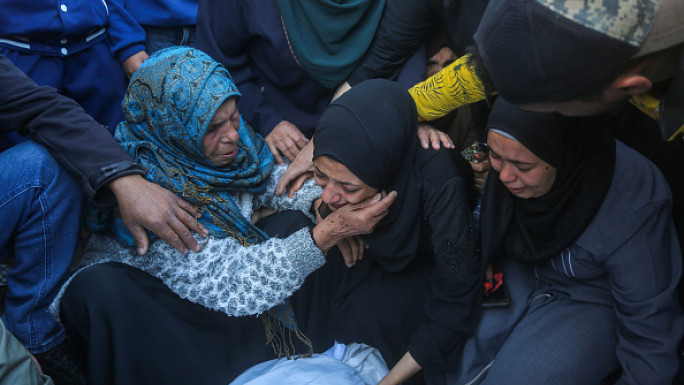

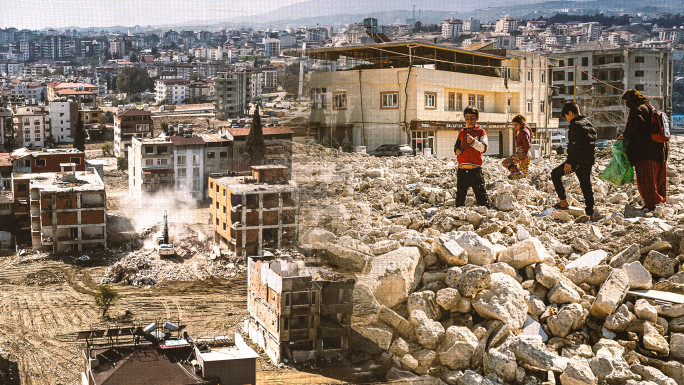
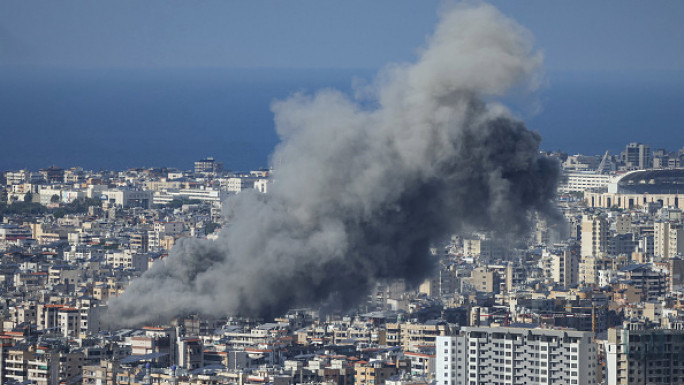
 Follow the Middle East's top stories in English at The New Arab on Google News
Follow the Middle East's top stories in English at The New Arab on Google News

